Persimmons, those funny smooth, orange fruits bursting with vitamins, reach full ripeness in autumn. Considered an exotic fruit, the persimmon is the fruit of the kaki tree, a tree that is actually very hardy due to its Chinese origins and is completely adapted to our latitudes. Do you have a kaki tree at home and are unsure when to harvest the many fruits that are beckoning you? Follow our advice… We also explain how to properly store and use this fruit.
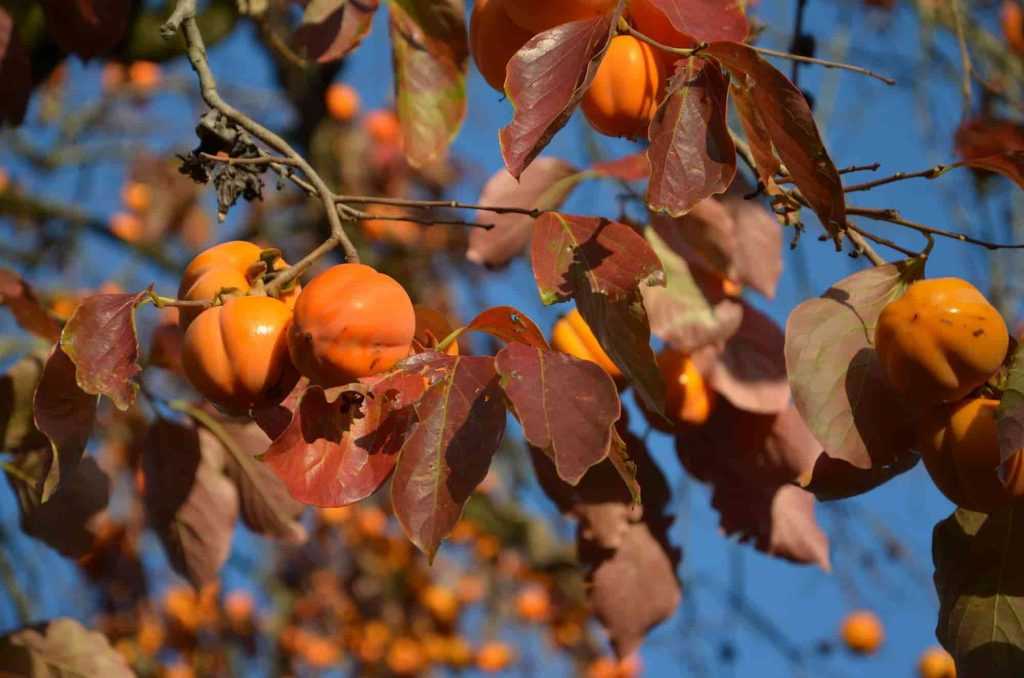
Persimmon, a beautiful stranger
The Persimmon tree is often cultivated for the ornamental value of its beautiful autumn foliage and its pyramidal silhouette. But we especially love the look it takes on when its leaves begin to fall, revealing a myriad of round, orange fruits, sometimes red, that inhabit the branches, giving it a Christmas tree appearance. With its Latin name Diospyros kaki, the kaki tree is both ornamental and edible, making it a lovely fruit tree. It grows between 5 and 12 m and needs space in a garden. For good production, climates with a warm late season are beneficial as they allow the fruits to ripen well. A kaki tree planted in the north and east of France will therefore be used mainly as an ornamental tree.
Being dioecious, it is the female trees that bear the fruits. Persimmons are very rich in tannins and are known to have an astringent taste. The kaki tree produces fruits after 3 to 4 years of cultivation and can live for about fifty years.
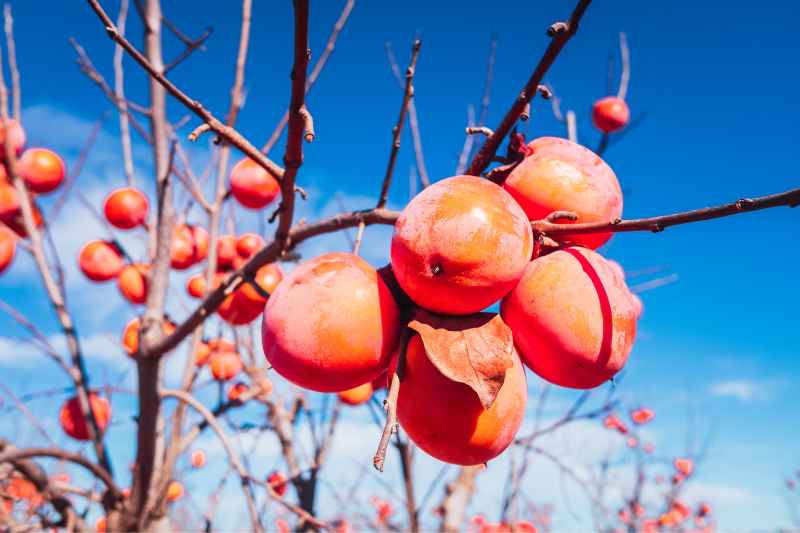
When to harvest persimmons?
To know if persimmons are ripe, you should primarily rely on their colour. When ripe, the fruits take on a beautiful dark orange colour, up to a light brownish-red in some varieties. Much like medlar fruits (from the common medlar tree), persimmons are harvested late, after the first frosts, from October to November depending on the region. The leaves, now red, will have fallen in most regions, leaving the tree bare, presenting a somewhat surreal sight with its bright fruits hanging. It is the frosts that will remove the astringency from the fruit, giving it a soft texture. Always wait a bit longer, as if the fruits are not soft enough, they will be hard and gritty, failing to develop all their flavours. Note that the timing of the harvest will depend on your region and especially on the variety of persimmon (the firm kaki-apple, like 'Fuyu', and the non-astringent, sweet varieties like 'Sharon').
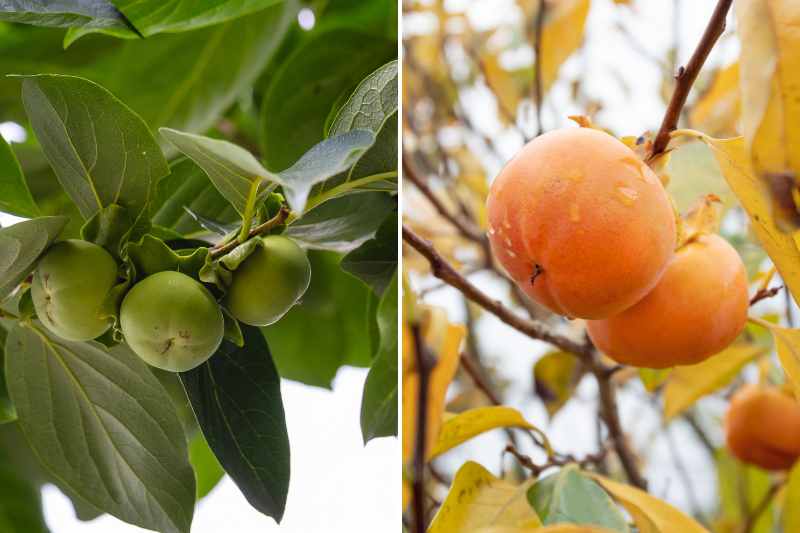
How to harvest Persimmons?
Persimmons remain attached to the tree even when ripe. As the tree is tall, they are harvested carefully by cutting the peduncle with scissors or pruning shears, leaving about a centimetre of stem on the fruit. Avoid pulling on the fruit to detach it from the tree, as this can damage both the tree and the fruit.
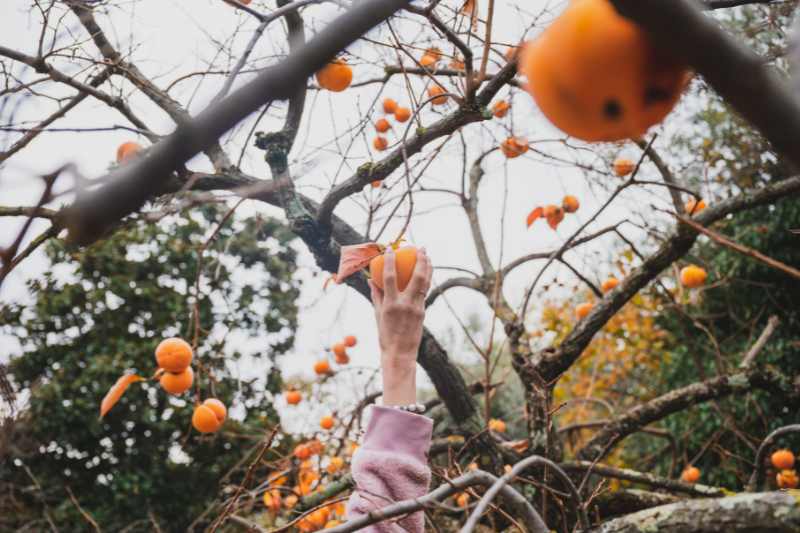
How to store and consume persimmons?
Once picked, persimmons should be stored for a few days before consumption. This allows the tannins in the fruit to transform. This transformation will be delayed if persimmons are kept in a cold place, and conversely, accelerated in a warm atmosphere. You can also place a few apples around the persimmons to speed up the ripening process, resulting in softer fruits. After that, persimmons should be consumed fairly quickly to avoid losing their precious vitamins (notably provitamin A, vitamins B9 and C).
As production is generally prolific with the kaki tree, several methods can be combined to preserve the fruits:
- freezing: persimmons freeze quite well once you have cut the fruits into pieces, placed them in a freezer bag, to be consumed within 6 months
- dried persimmons: dried persimmons, or hoshigaki are a very popular treat in Northeast Asia. I discuss this in more detail in this dedicated advice sheet!
While they are most often consumed raw, with a spoon or cut into pieces in a fruit salad, persimmons also lend themselves to cooking, for example mixed into a winter compote, or made into jams, roasted with a good ice cream, or even in a melting tarte tatin. Try them also in a sweet-savoury version, in chutney, or reduced into sauce with white meats (poultry, pork), and even in small stuffed dishes!
We love their unique flavour and colour that brighten festive dishes like in the famous pavlova with persimmon, or in chutney to accompany foie gras…
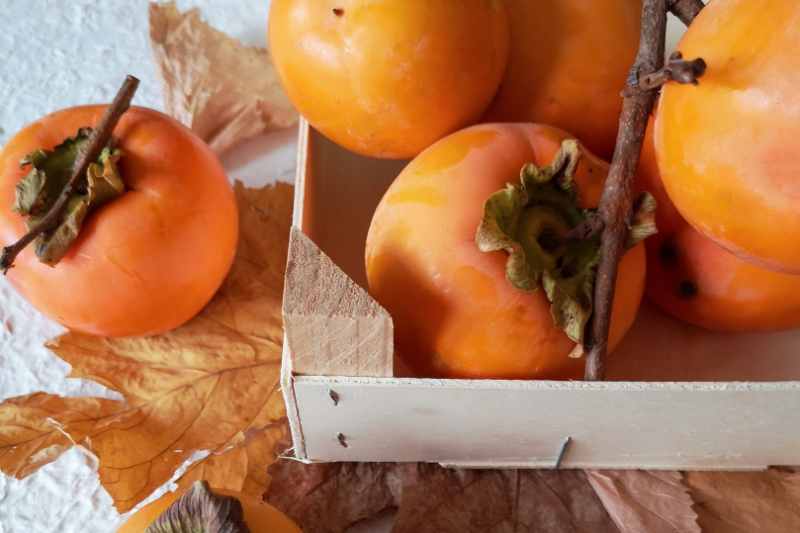
Learn More...
Our wide range of persimmons is available in our online store!
Also discover 7 exotic and hardy fruit trees to grow in the garden
Fancy some original jams? Follow Virginie D.'s advice in Fruits for original jams































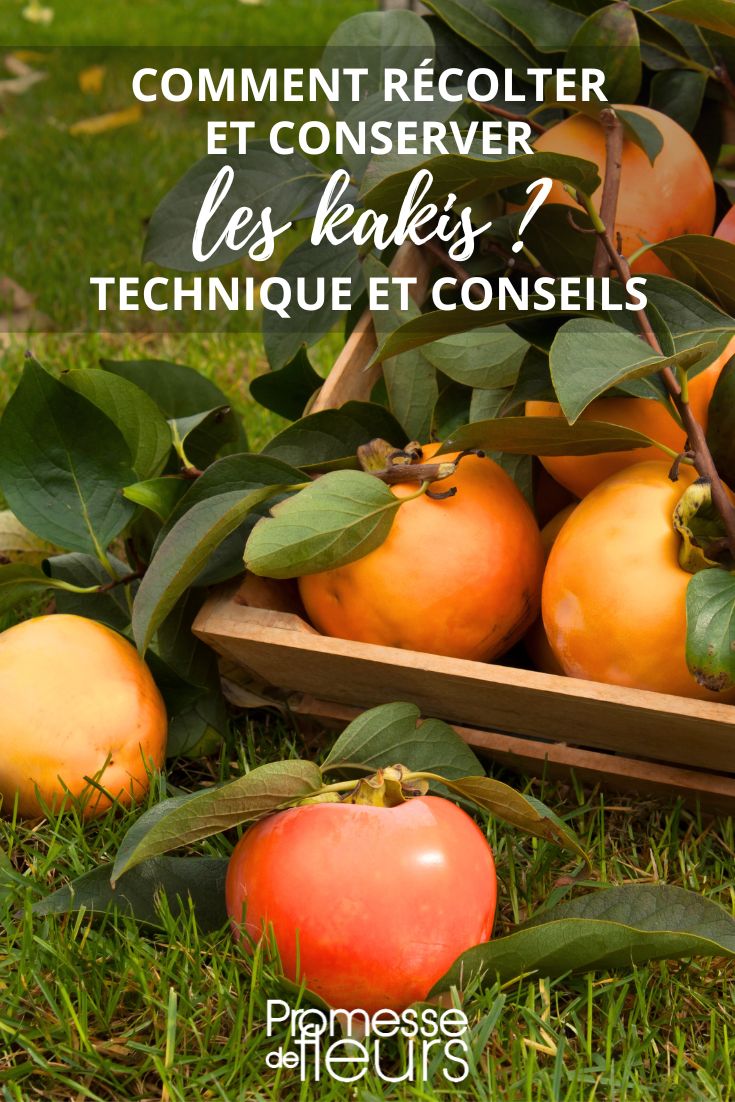
Comments